 Wordtrade.com
Wordtrade.com
Religion Christianity
Review Essays of Academic, Professional & Technical Books in the Humanities & Sciences
Holy and Unholy Images
THE HOLY AND THE UNHOLY: ANALOGIES FOR THE NUMINOUS IN
LATER MEDIEVAL ART
by Debra Higgs Strickland
A complete unknowing is the knowledge par excellence of that which is beyond all things. --Pseudo-Dionysius
Medieval artists conceived of the holy and the unholy as a visual dichotomy, which they created using an expressive vocabulary of well-understood pictorial signs. The rendering of the human body was one of the principle ways of signifying a personage's holiness or unholiness according to the medieval principle, inherited from antiquity, that physical form is an external signifier of inner character.' And so in later medieval art, the blessed are beautiful and the damned are ugly, clarifying for viewers the moral opposition between the two. This is why, even though they are separated from each other stylistically by two centuries, Cimabue's famous portrait of Saint Francis painted on the transept wall of the lower chapel in the basilica in Assisi is in every way the formal antithesis of the hideous Satan glaring menacingly from a French Book of Hours (figs. 1,.2).
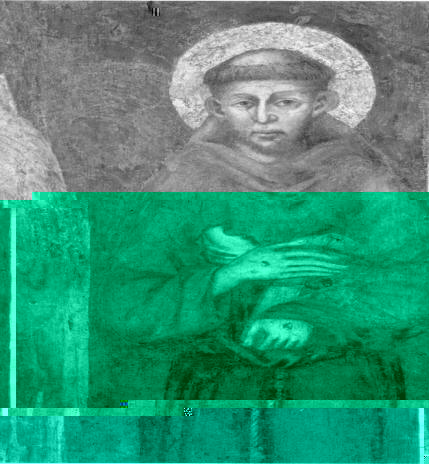
Fig. 1. Cimabue, Saint Francis (detail of Madonna and Child with Angels),c. 1280. Assisi, Basilica S. Francesco. Photo: © 1990. Photo Scala, Florence.
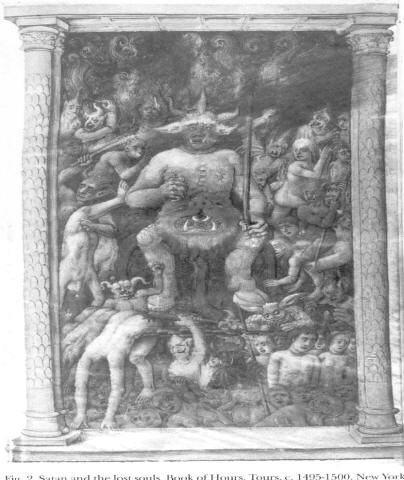
Fig. 2. Satan and the lost souls, Book of Hours. Tours, c. 1495-1500. New York, Pierpont Morgan Library, M. 356, fol. 64r. Photo: reproduced by permission of The Pierpont Morgan Library, New York.
In these two images, beauty and ugliness are created through the retention or distortion of normal human facial features and expressions, bodily proportions, and skin colouring. The same stark physiognomical contrast that signals the gulf between virtue and vice may be observed across the art of the later Middle Ages, especially in scenes that oppose Christ with the Jews, angels with demons, or saints with their torturers.
Pictorial representations of holiness and unholiness expressed through physiognomical form may be said to have as their primary purpose the communication of the moral or ethical dimension of Christianity as literally embodied by the personages portrayed. But medieval artists necessarily adopted other semiotic strategies to visualize the more profound aspect of Christianity which transcends its rational, moral dimensions. In this chapter, I shall explore how artists expressed the non-rational aspect of the holy and the unholy, what the German Lutheran philosopher and theologian, Rudolf Otto (1869-1937), identified as the numinous element in religion, which he examines at length in his seminal work, Das Heilige (1917; translated into English as The Idea of the Holy). The term, 'numinous', as Otto defines it, refers to the ineffable aspects of divinity that elude comprehension in rational or moral terms. Otto defines 'the holy' as a category of interpretation that contains a specific element or moment apart from the rational which remains inexpressible or ineffable in the sense that it completely eludes apprehension in terms of concepts. For Otto, the holy denotes perfectly moral, absolute goodness; but beyond this it carries an overplus of meaning beyond the ethical element. It is this 'unnamed Something' or 'extra' meaning which can be isolated and given the name of numinous, allowing us to speak of a unique numinous category of value and of a definitely numinous state of mind. Otto contends that this numinous value or state cannot be strictly defined and it cannot be taught, but rather can only be evoked or awakened in the mind.' He uses a particular phrase to describe numinous experiences: mysterium tremendum et fascinans. This phrase expresses the power of the divine to overwhelm the worshipper, and also highlights the bipolar nature of divinity, capable of instilling awe which both repels and attracts.'
Although Otto's extensive world travels acquainted him with religious responses to the numinous in different cultures and religions, he maintained that such responses reach their greatest intensity and articulation in the practice of Christianity. They are also detectable in Christian art. According to Otto, Christian art, especially Gothic architecture, is "the most numinous of all types of art" because the `sublimity' attained in artistic production of this period is seen by him as the most effective means of representing the inexpressible, and thus provides suitable visual analogies for the numinous.
Informed by dogma, belief; and mystical experience, we might also expect works of medieval painting to address this non-rational aspect of the divine. What is rarely discussed, however, are the pictorial methods by which medieval painters attempted to express the inexpressible, perhaps because these methods tend to involve the non-mimetic, or abstract aspects of images produced during an artistic period so heavily viewed from iconographical perspectives.' Otto fully acknowledged the limits of language in describing the numinous," preferring the visual arts and music as more effective ways of expressing it. And for centuries before him, it is, clear that medieval artists recognized the potential of the visual to evoke devotional responses that transcend words.
While it might appear anachronistic or even inappropriate to approach the problem of medieval artistic representations of the holy and the unholy from an early twentieth-century Protestant perspective, there is a logic in so doing. Otto's ideas about divinity find many points of convergence with those articulated by a number of influential medieval theologians and mystics writing in disparate places and periods, some of whom he specifically acknowledges, such as Gregory of Nyssa (c. 330—c. 395), John Chrysostom (c. 347-407), Augustine of Hippo (354-430), and Meister Eckhart (c. 1260—c. 1328). In discussing the parallels between his own interpretations and earlier ones, Otto calls attention to the medieval concern with issues that centuries later were still central to Christian worshipers, most notably the problem of how the creature may comprehend the Creator. That it is concerned primarily with worshipper experience is what first attracted Gary Dickson to The Idea of the Holy during his formative studies of the phenomenology of religion undertaken in his late teens. Dickson's subsequent intellectual focus on medieval religious revivals, observances, crowds, devotions, cults, and movements reveals a similar orientation towards the history of religion as lived human experience rather than as abstract belief system.
In a further continuation of medieval tradition, Otto demonstrates the utility of the via negativa in his attempts to understand numinous experience, an approach rooted fundamentally in the fifth-century neoplatonic writings of the Pseudo-Dionysius. Dionysius wrote at length about the immeasurable and inexpressible nature of the hidden God, and maintained that God must transcend any formulation that the rational mind can make. His work inspired a continuous stream of medieval practitioners of the negative way that reached its apogee in a 'Dionysian renaissance' among the thirteenth-century Scholastics.". It is true that Dionysius wrote nothing about the ordinary religious experience that Otto was at such pains to illuminate. However, Dionysian claims about the ineffable nature of God and the unsuitability of language for describing divinity were taken up by Otto and profoundly inform his own ideas of the worshipper's response to the numinous.
I suggest that together, these medieval and modern theological perspectives may deepen our understanding of later medieval religious representations for which iconographical methods alone provide incomplete analytical explanations. Using both Dionysius and Otto as my principle reference points, I shall examine a small selection of later medieval images in order to ascertain how artists transcended the limits of iconography and language to communicate the more profound aspects of holiness and unholiness in their renderings of the divine and the damned. Most—but not all—of these pictorial examples are iconographically conventional and representative of many more of their kind. I shall argue that in various ways, all of them provide visual analogies for the experience of the numinous through their communication of an 'unnamed Something' that resists verbal description. I am not suggesting that medieval artists would have conceived of their images in exactly the ways I shall describe them. But by using an analytical method informed by both medieval and modern theology, I hope to further clarify an important dimension of medieval Christian art that is often ignored or overlooked, but that nevertheless is one of the definitive characteristics of artistic production of this period that deserves to be considered alongside iconographical, text-image and other types of analysis.
Picturing the Holy
A fundamental problem faced by medieval artists seeking to represent divinity was how to picture the unseen. If all of the prototypes are invisible, then images of God, heaven, and the angels are necessarily metaphorical because they translate into material forms what cannot be seen by earthly eyes. Such representations fit Dionysius's definition of 'similar symbolism', meaning images that are beautiful, simple, and agreeable to the senses but that ultimately are unsuitable for the expression of the hiddenness of the unseen. Simple symbolism, Dionysius reasons, is therefore better adapted to the education of beginners who`cannot yet grasp the profundities of divinity but rather must approach it by way of base, material forms.
One type of image that fits the Dionysian definition of similar symbolism is represented by the portrait of God found in the late Fifteenth-century prayerbook of Maréchal de Gié (fig. 3).
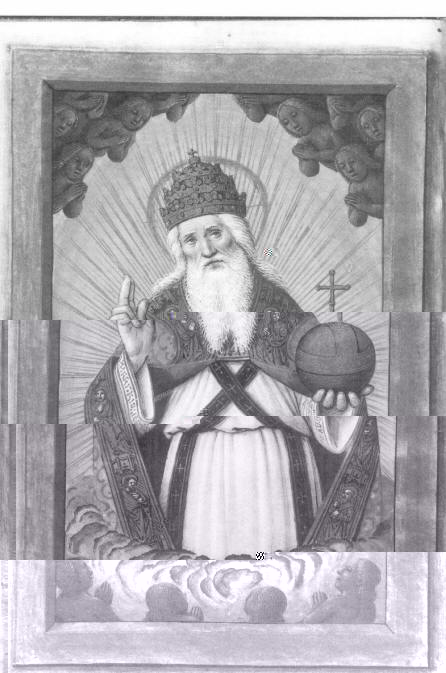
Fig. 3. God the Father, Prayerbook of Maréchal de Gié. Tours, late 15th-c. New York, Pierpont Morgan Library, M. 292, fol. 6v. Photo: reproduced by permission of The Pierpont Morgan Library, New York.
Here, God the Father is rendered as a venerable man whose great age signifies eternity His human form carries positive meanings according to physiognomical theory, thus allowing contemporary viewers to understand his light skin, proportionate facial features, and flowing hair as signs of virtue." The accumulated wisdom signified by the Father's old age is a metaphor for God's omniscience. Omnipotence is expressed metaphorically through the figure's ecclesiastical garments, papal tiara, and the orb surmounted by a cross, all attributes of power that conflate the celestial hierarchy with the contemporary earthly one. God's halo and mandorla are familiar and luminous, abstract signs of his divinity, traditional visual analogies for what Otto describes as the overplus of meaning contained within the holy.
An image of heaven and hell from the thirteenth-century English De Brailes Psalter may be viewed from a Dionysian perspective as representative of another type of similar symbol (fig. 4).
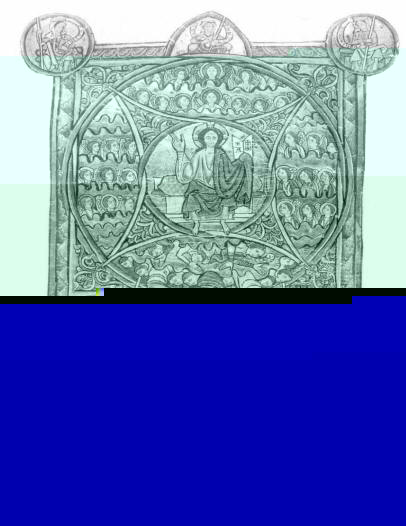
Fig. 4. Fall of the rebel angels, De Brailes Psalter. England, c. 1240. Cambridge, Fiztwilliam Museum 330, leaf 1. Photo: reproduced by permission of the Syndics of Fizwilliam Museum.
Because belief in heaven and hell as material realities was encouraged among the medieval faithful in numerous verbal and visual contexts, this image must be viewed in the first instance as didactic." Heaven, which occupies the top two-thirds of the pictorial space, is populated by orderly rows of angels. That the angels, widely understood as incorporeal beings, are given physical form was explicitly justified by Dionysius. In Chapter 15 of the Celestial Hierarchy, Dionysius explains that artistic representations of incorporeal beings can help lead the mind to an understanding of the nature of the divine. And so he interpreted each body part and attribute of anthropomorphized angels as representative of the various aspects of their divine essence. For example, the wings represent freedom from worldly attraction and the feet signify the upward climb to heaven and the speed of the perpetual journey to divine things.'
But there is more in the De Brailes Psalter image than similar symbolism. Certain pictorial elements transcend material metaphor to offer visual analogies for inexpressible aspects of the divine. One of these analogies is silence. The inertia and the closed mouths of the angels suggest stillness, calm, and silence in the face of the deity whom they surround and adore. Dionysius wrote, "With a wise silence we do honor to the inexpressible". Similarly, Otto observes that silence is one of the main ways that the numinous can be represented in art, most effectively in music, because silence is a spontaneous reaction to the feeling of the power of the numen, the divine presence. In the psalter image, silence is broken at heaven's lower exit, where some of the angels are falling while taking on the form of dark demons who tumble into the gaping beast-maw of hell below. The grimaces and open mouths of the fully transformed demons suggest shrieking and wailing in a cacophonous panic that contrasts sharply with the silent calm of the closed-mouth inhabitants of heaven above. This is an image that relies on oppositional, non-mimetic pictorial elements to more sharply distinguish the holy from the unholy: top versus bottom, light versus dark, order versus disorder, passivity versus action, and most dramatically, human versus bestial physicality. Dionysius insisted that divinity can only be described by what it is not—and it is none of these things.
Some medieval artists rendered forms that could evoke those moments of numinous experience identified by Otto as the mysterium and the tremendum. The moment of tremendum refers to the feelings of awe and dread in the presence of the deity, for which Otto offers the ideogram of 'Wholly Other'. Otto defines as Wholly Other "that which is quite beyond the sphere of the usual, the intelligible, and the familiar, which falls quite outside the limits of the 'canny' and therefore is contrasted with it, filling the mind with blank wonder and astonishment". Such mental astonishment marks the moment of the mysterium. Medieval artists who attempted to depict God as Wholly Other found solutions to the problem of picturing divinity that were quite oppositional from those observable in the images that we have observed so far.
That is, while the similar symbolism of God the Father, heaven and hell provides translations of the invisible and ineffable into material metaphors, images that visualize the wholly otherness of God provide visual analogies for ineffability itself. Medieval artists expressed the inexpressible through colour and other non-mimetic artistic elements, as well as extreme bodily distortion whose meaning directly violates the conventional rules of physiognomical theory.
In a well-known image from a thirteenth-century English psalter, God is rendered as a three-headed monster (fig. 5).
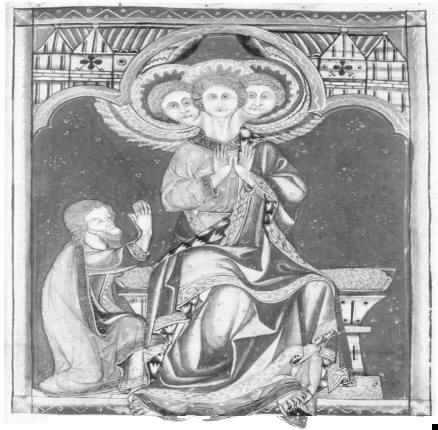
Fig. 5. Abraham and the angels, psalter. England, c. 1270-80. Cambridge, St. Johns College Library, K26, f. 9r. Photo: reproduced by permission of the Master and Fellows of St John's College, Cambridge.
From an Ottonian perspective, the figure is an appropriate representation of God on the grounds that the monstrous is just the mysterium in a gross form." The image is at the same time an example of 'dissimilar symbolism', preferred by Dionysius for representing the holy: because its shapes are so completely at variance with what it really is, the viewer through contemplation of dissimilar symbolism may come to discover how the holy transcends all materiality.
This particular divine monster communicates an important point of medieval Christian doctrine, in that its three heads correspond to the three persons of the Trinity and by attaching them to one body, the artist conveys their perfect unity. The caption indicates that the kneeling figure represents Abraham, which identifies the historical context of the image as the Old Testament episode of the three angels who came to dinner (Gen. 18:1-16), widely understood as a typological parallel for the Trinity." As a representation of the Trinity, then, the three-headed monster is simultaneously a vision of God as Wholly Other. Thus, Abraham's attitude of reverence and awe before the Trinity may have had prescriptive value or have prompted viewers contemplating the image to recall their own experiences of the mysterium tremendum.
Although the concept of a three-headed Trinity was doctrinally justified, such monstrous images of God are rare in medieval art, probably owing to the negative associations of physical deformity with sin and vice familiar to viewers from other artistic contexts. To the more literal-minded, a monstrous Trinity was perhaps also difficult to square with the belief that humans were created in God's image. But for those willing to contemplate the divine on a deeper level, the image conveys in a very economical way the typological parallel of Abraham's three angels and the Trinity, and also provides visual analogies both for God as Wholly Other and the numinous moment of mysterium. From a Dionysian perspective, a three-headed monster, as a dissimilar symbol, correctly portrays the Godhead as what it is not. From an Ottonian standpoint, the negative aspects of monstrosity in this image communicate the bipolar character of the holy, capable of stirring in the worshiper both attraction and revulsion."
Illuminated manuscript copies of Alighieri Dante's Paradiso express the ineffable in both words and pictures, and the pictorial visions may be analyzed from- both Dionysian and Ottonian perspectives. An image from a copy of the Paradiso illuminated by Giovanni di Paolo (c. 1403-1482) around 1445 evokes the third moment of numinous experience, the fascinans, identified by Otto as the pole of the numinous that captivates, attracts and allures and therefore contrasts with the moment of the tremendum addressed in the previous image. In Canto XXVIII, Dante sees reflected in Beatrice's eyes the immateriality and indivisible unity of God as an infinitesimal point of light, the Pure Spark, surrounded by fiery circles (fig. 6).
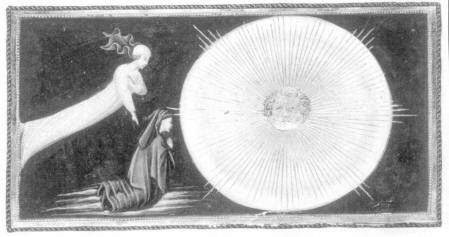
Fig. 6. Dante looks directly at God; Beatrice identifies the nine orders of angels. Giovanni di Paolo. Paradiso, Siena, c. 1445. London, British Library, Yates Thompson Codex 36, fol. 179r. Photo: reproduced by permission of The British Library, London.
Following Dionysius, he maintains that humans can behold aspects of God if their souls are worthy: "their sum of merit is the measure of their sight"." Giovanni pictured that merit as great by depicting Dante gazing in rapture directly at the Godhead, a blazing, golden disk with a delicately drawn human face surrounded by concentric, circular areas of fiery colour that Beatrice recognizes as the nine choirs of angels. As a dissimilar symbol of God, this is a Dionysian image on two more counts. First, in the accompanying text, Dante identifies the nine choirs of angels with those in the Celestial Hierarchy; and second, fire is the preferred Dionysian metaphor for divinity." Beyond any verbal expression of the fascinans, the deep blue void surrounding the figures evokes the numinous because, as Otto observes, visual emptiness is analogous to silence in music as a reaction to the presence of the divine."
Representing the Unholy
Although representations of divinity remained a central project for medieval artists, during the later Middle Ages there was arguably an even greater artistic preoccupation with unholiness. One angel might bear a family resemblance to many others, but the visual variety observable in representations of demons is legion. This situation at first appears to contradict Dionysius's assertion that evil is nothing more than the absence of good and therefore without independent being or existence." According to him, because it is a lack, a privation, the representation of evil is impossible except by means of metaphor. Just as artists gave the invisible heaven, angels, and God metaphorical, material forms; so they also found visual metaphors with which to represent the unholy. In the analysis of medieval art, it is useful to think of unholiness incarnate, rendered in physical forms opposed to those assigned to angels, Christ and the saints.
Medieval artists rendered physiognomically beautiful angels, and we have seen how these images may be interpreted from a Dionysian perspective as didactic, similar symbols. Later medieval angels often wear white and gold garments and sometimes sport colourful wings, as in the image of heaven and hell from the fifteenth-century Livre de la Vigne de Nostre Seigneur (fig. 7).
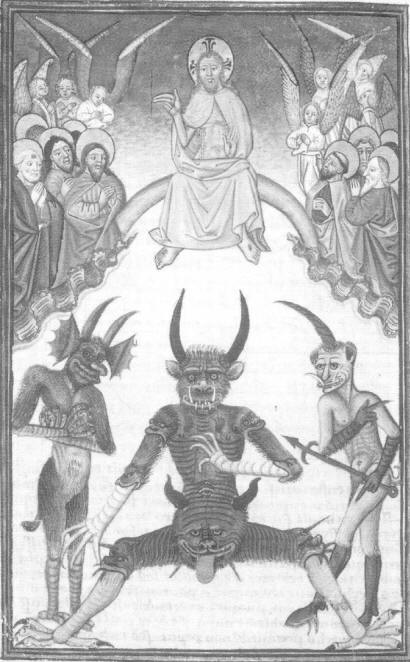
Fig. 7. Heaven and hell, Livre de la Vigne de Nostre Seigneur. France, c. 1450-70. Oxford, Bodleian Library, Douce 134, fol. 67v. Photo: reproduced by permission of The Bodleian Library, University of Oxford.
They tend to stand or hover at rapt attention, or sit silently praying, or engage in some type of music-making. But medieval demons undertake a much broader variety of activities—none of them good—and as observable here and elsewhere in the Livre de la Vigne imagery, their physiognomies often incorporate a baroque set of negative pictorial signs, which may include dark skin; deformity; bestial features such as fangs or beaks, horns, hooves, and tails; ugly grimaces; and supernumerary bodily orifices (figs. 2, 4, 7, 8). Demonic attributes, such as military weapons, pitchforks, fleshhooks, and flails, are associated with warfare, agricultural labour, and torture; and the torments inflicted by demons upon the damned include some of those familiar to medieval viewers from earthly spectacle, including public punishment.
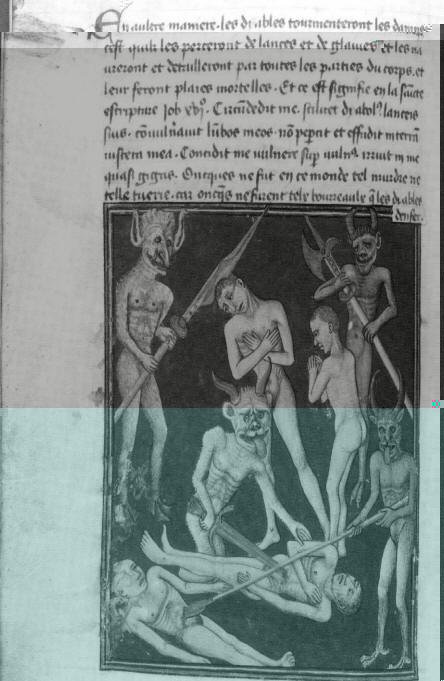
Fig. 8. Torments of the damned, Livre de la Vigne, fol. 100v. Photo: reproduced by permission of The Bodleian Library, University of Oxford.
Such demonic traits do not directly recall the teachings of Dionysius, who assured his readers that devils really cannot be evil by nature, because like all creatures, they owe their origins to God, who created only good. However, Dionysius goes on to explain that good is lacking to demons by virtue of their inability to hold on to their original source. This means that evil is impermanent, because permanence is only a property of the good. Devils, in other words, have moved far away from their capacity to be perfect but in theory could reclaim it." Medieval images of devils, however, do not suggest impermanence, even though some representations of the angels falling do acknowledge their original, created state of goodness by charting a physical change from perfect to monstrous as a visual metaphor for their spiritual transition from moral perfection to absolute evil (fig 4). But medieval images that forecast a return trip from evil back to good are unknown to me. As far as I am aware, in conventional images of hell and the damned there are no artistic indications that ugly demons could ever regain the God-given goodness signified by their former physiognomical beauty
Beyond the realm of the theological, medieval images of demons functioned socially as a tool for collective denigration of the perceived enemies of the Church, especially the Jews. In tandem with contemporary biblical exegesis, literature, sermons and drama, medieval artists
created visual correspondences between demons and Jews that effectively conflated the two. The most blatant examples situate Jews in demonic company, as in the notorious image added to the 1233 Roll of the Exchequer, which shows Isaac of Norwich surrounded by other Jews and demons who share a common space and a family resemblance (fig. 9).
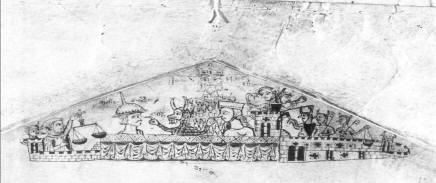
Fig. 9. Isaac of Norwich and associates, head of the
Roll of the Exchequer for 1233. London, The National
Archives (formerly Public Record
Office). Photoz reproduced by permission of The National
Archives, London.
The supposed Jewish love of money and engagement in usury is highlighted on the far left by the demon overseeing another Jew weighing gold coins. Isaac, in the centre, is three-faced, a feature that carries the negative meanings of physical deformity, mocks the Trinity, and also implies an association between Jews and the Antichrist, who in other artistic contexts is often depicted with three faces.
The vocabulary of demonic forms also supplied medieval artists with the tools to promote the powerful accusation that the Jews killed Christ. The enlarged eyes and noses, ugly grimaces, and beards of the stereotypical, pictorial Jew regularly included in images of Christ's torments were grounded in demon portraiture. Such stereotyped figures feature in a thirteenth-century image, representative of many others, of the mocking of Christ from the Fitzwarin Psalter (fig. 10).
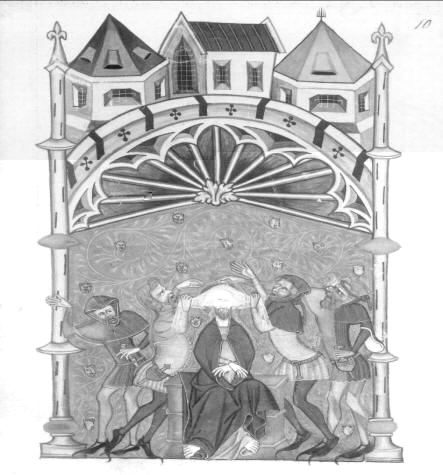
Fig. 10. Mocking of Christ, Fitzwarin Psalter. England, c. 1350-75. Paris, Bibliothèque Nationale, lat. 765, fol. 10r. Photo: reproduced by permission of the Bibliothéque Nationale de France, Paris.
In this single image, the incarnate holy and unholy are expressed through the familiar physiognomical opposition noted above in relation to the individual portraits of Saint Francis and Satan (figs. 1, 2). Here, it is Christ who is light-skinned, beautiful, proportionate and serene; as contrasted with his dark, ugly and agitated Jewish tormentors. In such images, headgear and other costume details facilitated Christian efforts to collapse the chronological distance between New Testament and medieval Jews, which in turn helped to justify ongoing accusations of a Jewish-led, anti-Christian conspiracy."
The image of Isaac of Norwich is a reminder that next to the Devil himself; the most unsettling medieval figure of unholiness incarnate was Antichrist (fig. 9). As noted above, the image mocks and condemns Isaac, a Norwich Jew, by portraying him with the three faces often assigned to Antichrist in medieval iconography, and by including an assortment of demons among his surrounding contemporaries. As this image makes plain, Antichrist, like the demons, was inextricably linked to the Jews, and so the Antichrist tradition became an important anti-Jewish weapon in the contemporary Christian arsenal: medieval Christians believed that Antichrist would be a Jew, born of the tribe of Dan, and that Jews all over the world would accept him as their messiah and assist him in his attempted overthrow of all of Christendom.
Pictorial representations further augmented the anti-Jewish aspects of the legend and demonstrated the extent of Antichrist's evil by rendering scenes from his life in unholy parallel to the life of Christ." For example, far from remaining a virgin in et post partum, Antichrist's mother, expected to be a Jewish whore, was to suffer a caesarean birth to be administered by a demonic midwife, as shown in an image from an Antichrist blockbook produced around 1456 in Nuremberg (fig. 11).
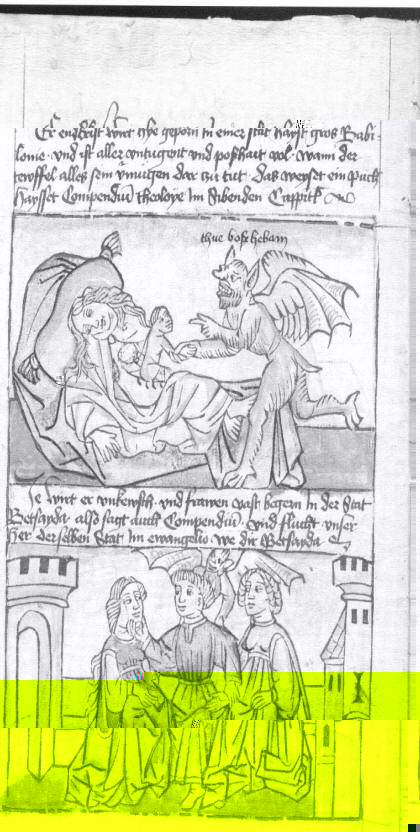
Fig. 11. Birth of Antichrist, Entkrist. Nuremberg, c. 1456, fol. 2v. Schweinfurt, Sammlung Georg Schafer. Photo: reproduced by permission of the Sammlung Georg Schafer.
Because the viewers of such imagery would have been familiar with conventional scenes from the life of Christ (in this case, his nativity), it is clear that the Nuremberg image and others that depict Antichrist's birth and subsequent deeds—his blasphemous preaching, false miracles, and faked resurrection—gained power and created revulsion by their audacious redeployment of the iconography of the holy in the representation of the unholy.
Numinous Horror
Beyond iconography, just as medieval artists provided visual analogies for the non-rational aspects of the holy, they also addressed an 'unnamed Something' in their images of the unholy in ways that could awaken in the minds of viewers their own experiences of evil. Otto conceptualizes `numinous horror' as the mysterium tremendum cut loose from the other elements of the numinous and intensified to mysterium horrendum. The object of the horror provoked by encounters with evil, therefore, may be designated as the negatively numinous."
Medieval artists found opportunities to visualize the non-rational aspects of evil that have the power to repel during the horrendum moment of the experience of the negatively numinous, a response that may be seen in opposition to the fascinans element experienced in the presence of the deity. Two different solutions to the problem of how to evoke the horrendum moment in Antichrist representations may be observed in a pair of images separated by three centuries. The first, from the fifteenth-century Livre de la Vigne, depicts Antichrist as a mortal man with a red demon's head lodged eerily atop and slightly in front of his human one (fig. 12).
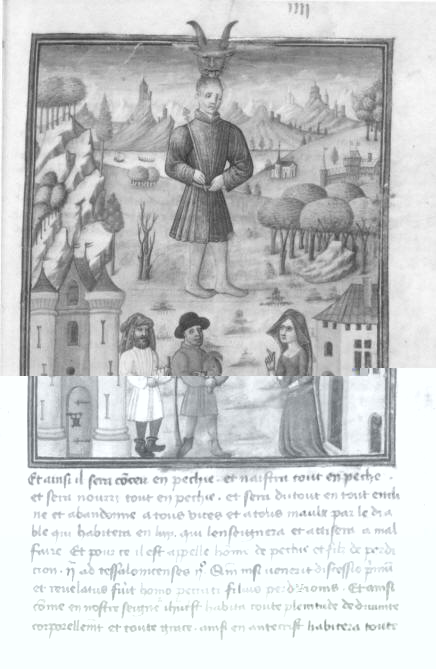
Fig. 12. Antichrist, Livre de la Vigne, fol. 4r. Photo: reproduced by permission of The Bodleian Library, University of Oxford.
Antichrist's huge size affirms his power, and the demon's head visible to viewers of the image but presumably not to the human spectators depicted below—affirms his evil nature and allegiance. As in the image of Isaac of Norwich (fig. 9), the narrative details of the Livre de to Vigne Antichrist scene also denigrate specific contemporary groups. Standing below Antichrist in fifteenth-century dress are a turbaned Saracen (Muslim) and a hatted Jew in conversation with a woman. These figures represent the constituencies who will be the first to succumb to Antichrist, thus underscoring their moral degeneracy in the here-and-now.
In her much earlier rendering, the Rhenish prophetess and mystic, Hildegard of Bingen (1098-1179) used very different pictorial methods to evoke the horror of Antichrist as she herself experienced it (fig. 13).
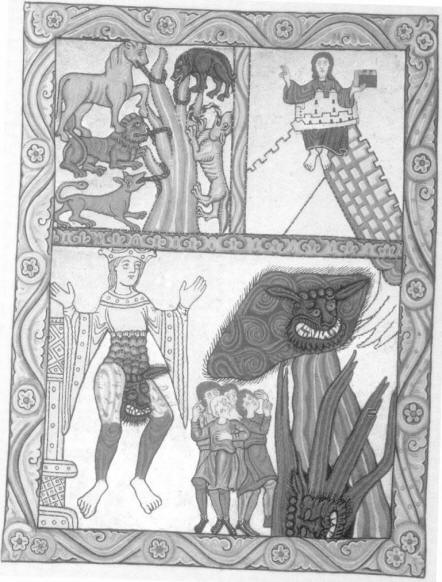
Fig. 13. Vision of Antichrist. Hildegard of Bingen, Scivias, fol. 214v. 1927-33 copy after Rupertsburg, 1165. Photo after Liesolotte E. Saurma-Jeltsch, Die Miniaturen im "Liber Scivias" der Hildegard von Bingen: Die Wucht der Vision and die Ordung der Bilder (Wiesbaden: Dr. Ludwig Reichert, 1998); copyright Dr. Ludwig Reichert Verlag Wiesbaden; reproduced with permission.
The Antichrist portrait survives in a 1930s copy of an image from a lost twelfth-century manuscript containing an illustrated account of her collection of prophetic visions known as the Scivias. The images in the original manuscript, dated 1160-1175, are thought to have been designed by Hildegard herself and thus to provide a rare glimpse of medieval mystical experience." This is a subject of special interest to Rudolf Otto, who recognized mysticism as the most numinous of religious experiences.' From this perspective, we might hypothesize that a medieval image of a mystical vision created by an artist who was also the seer might contain an especially pronounced expression of the ineffable." While it is necessary to interpret Hildegard's unique images in relation to the accompanying text and to earlier iconographical traditions, beyond such comparisons, it has been observed that her images also communicate aspects of her visions that could not be expressed with words."
The Antichrist image in particular provides a striking visual analogy for the non-rational element of Hildegard's experience, and prescribes for its viewers a similar response not to the image itself, but to its negatively numinous prototype. In Book 3 of the Scivias, Hildegard paired a verbal description of her vision of the rise and fall of Antichrist with a disturbing portrait that marshals the negative signifying power of the monstrous (fig. 12).
The visionary context of the image defines monstrosity not as a dissimilar symbol of God, as in the previously examined portrait of the three-headed Trinity (fig. 5), but rather as a monstrous sign of absolute evil. In the upper register on the left, five menacing beasts stand for the villainous world leaders to come. Directly below, Antichrist is rendered as a dark, grotesque, grimacing phallic head emerging from between the cut and bleeding legs of a large, golden, crowned female standing next to a golden altar. This female figure is identified in the text as Ecclesia, seen by Hildegard as bloodily violated by Antichrist. But Hildegard next saw Ecclesia vindicated by her bridegroom, the Son of Man, shown blessing on a diagonal from the right side of the upper register, situated in a golden void suggestive of the numinous. In the lower register, to the right of Ecclesia, the monstrous, the eschatological and the scatological merge, as a grimacing Antichrist with blood-red eyes perches atop a mountain covered in excrement as he is struck down by a golden thunderbolt. To the right, Antichrist is shown a third time, fallen at the base of the mountain, dead with closed eyes.
Hildegard's images have the potential to transport the viewer beyond the narrative of Antichrist to a contemplation of the numinous horror of his unholiness. As an oppositional parallel to the tremendum response to the mysterium suggested by the psalter figure of Abraham kneeling before the Trinity (fig. 5), the fearful astonishment of the witnesses gesturing towards Antichrist's demise in the lower register functions as part of the Antichrist narrative, but also suggests a human response to the moment of the horrendum in the presence of the negatively numinous.
The Scivias image of Antichrist and the psalter image of Abraham before the Trinity also bear witness to the different functions of monstrosity in medieval art. In the psalter image, monstrosity is a dissimilar symbol of God, and thereby evokes divinity; but in Hildegard's image, monstrosity is a sign of Antichrist's extreme moral degeneracy, and as such is more appropriately analyzed as an artistic use of physiognomical distortion for its negative signifying power rather than as a visual analogy for the via negativa. These oppositional functions of monstrosity in art are analogous to the bipolar character of the holy: capable of generating attraction as well as revulsion, with a majesty that overwhelms and fills the worshiper with awe."
By examining just a few medieval images representative of many more of their kind, I hope to have shown that contemporary artists created images of the holy and the unholy that reached beyond sacred texts or specific points of Christian dogma. Even when working within iconographical conventions, medieval artists used different semiotic strategies to evoke moments of the non-rational element of divinity and of evil, and to represent the wholly otherness of God. As didactic tools, these images reinforced Christian beliefs about heaven and hell and their respective occupants. But as objects of contemplation, they also may have helped viewers to recall their own experiences of the numinous, including the negatively numinous, and to facilitate subsequent religious experiences.
As instruments of coercion, images of the unholy incarnate characterized evil as an active threat to Christians, thus encouraging allegiance to Christ in exchange for the spiritual protection offered by the Church, its saints and its sacraments. Images of unholiness also functioned socially and politically: by locating it in clearly defined other places, artists distanced evil from the Church itself; and pejorative images of Jews and Muslims in association with demons and Antichrist helped to justify the oppression and annihilation of both groups at home and abroad.
The relationships between medieval images of the holy and the unholy, their literary points of reference, and visual analogies for an unnamed Something are complex. Acknowledgement of the non-rational element of the divine relevant to the creature's experience of the creator in the practice of the Christian religion was aided by medieval artists who created visual expressions of the inexpressible. Rudolf Otto and his medieval forbears found remarkably complementary ways to articulate this important aspect of Christian experience that paradoxically resists verbal description. In the medieval contexts under consideration, I take the Ottonian view that visual art was a better way than verbal language to evoke the ineffable, and suggest that the specific pictorial signs discussed above provided suitable analogies for medieval experience of the numinous. I further suggest that it is divinity's non-rational element, with which theologians continue to grapple, that is essential to our understanding of how medieval Christian imagery functioned in various contemplative, devotional and mystical contexts; and that visual analogies for the numinous are what differentiate an image that just tells a story from one that recounts, or points the way towards, a personal experience of the divine. This approach also invites us to look for potential applications of the via negativa in our analyses of medieval imagery, to broaden our analytical perspectives with the recognition that in some cases we are looking not at representations of what divinity is, but rather of what it is not.
Fig. 1. Cimabue, Saint Francis (detail of Madonna and
Child with Angels),
c. 1280. Assisi, Basilica S. Francesco. Photo: © 1990.
Photo Scala, Florence.
Fig. 2. Satan and the lost souls, Book of Hours. Tours, c. 1495-1500. New York, Pierpont Morgan Library, M. 356, fol. 64r. Photo: reproduced by permission of The Pierpont Morgan Library, New York.
Fig. 3. God the Father, Prayerbook of Maréchal de Gié. Tours, late 15th-c. New York, Pierpont Morgan Library, M. 292, fol. 6v. Photo: reproduced by permission of The Pierpont Morgan Library, New York.
Fig. 4. Fall of the rebel angels, De Brailes Psalter. England, c. 1240. Cambridge, Fiztwilliam Museum 330, leaf 1. Photo: reproduced by permission of the Syndics of Fizwilliam Museum.
Fig. 5. Abraham and the angels, psalter. England, c. 1270-80. Cambridge, St. Johns College Library, K26, f. 9r. Photo: reproduced by permission of the Master and Fellows of St John's College, Cambridge.
Fig. 6. Dante looks directly at God; Beatrice identifies the nine orders of angels. Giovanni di Paolo. Paradiso, Siena, c. 1445. London, British Library, Yates Thompson Codex 36, fol. 179r. Photo: reproduced by permission of The British Library, London.
Fig. 7. Heaven and hell, Livre de la Vigne de Nostre Seigneur. France, c. 1450-70. Oxford, Bodleian Library, Douce 134, fol. 67v. Photo: reproduced by permission of The Bodleian Library, University of Oxford.
Fig. 8. Torments of the damned, Livre de la Vigne, fol. 100v. Photo: reproduced by permission of The Bodleian Library, University of Oxford.
Fig. 9. Isaac of Norwich and associates, head of the
Roll of the Exchequer for 1233. London, The National
Archives (formerly Public Record
Office). Photo: reproduced by permission of The National
Archives, London.
Fig. 10. Mocking of Christ, Fitzwarin Psalter. England, c. 1350-75. Paris, Bibliothèque Nationale, lat. 765, fol. 10r. Photo: reproduced by permission of the Bibliothéque Nationale de France, Paris.
Fig. 11. Birth of Antichrist, Entkrist. Nuremberg, c. 1456, fol. 2v. Schweinfurt, Sammlung Georg Schafer. Photo: reproduced by permission of the Sammlung Georg Schafer.
Fig. 12. Antichrist, Livre de la Vigne, fol. 4r. Photo: reproduced by permission of The Bodleian Library, University of Oxford.
Fig. 13. Vision of Antichrist. Hildegard of Bingen, Scivias, fol. 214v. 1927-33 copy after Rupertsburg, 1165. Photo after Liesolotte E. Saurma-Jeltsch, Die Miniaturen im "Liber Scivias" der Hildegard von Bingen: Die Wucht der Vision and die Ordung der Bilder (Wiesbaden: Dr. Ludwig Reichert, 1998); copyright Dr. Ludwig Reichert Verlag Wiesbaden; reproduced with permission.